You can also listen to this article in the voice of own Plastic Artist Rosângela Vig:

The Graphite
Modernity is the transient, the ephemeral, the contingent, is half of the Art, being the other half, the eternal and the immutable. There was a Modernity for each old painter: most beautiful portraits that provide us of past ages is coated customs of his own time. Are perfectly harmonious; and, the clothing, hairstyle and even the gesture, the look and the smile (…) form a whole full vitality. We have no right to despise or ignore the transitional element, elusive, whose metamorphoses are so frequent. Eliminating them, necessarily fall into the void of an abstract beauty and indefinable, as the only woman before the first sin. (BAUDELAIRE, 2007, P.26)

Amid the monochrome of the city, the artist, a creative impetus, did the walls and the walls, their canvas and, unceremonious, dyed with signs of life, what was concrete inanimate. The artistic graphite emerges as an encouragement to urban roughness, softens the coldness of concrete; distracts the lost looks unbridled mob in and out of transport; and especially proposes conjectures. The colors allow a transitional balance to mind constantly boiling the stress of the big city and the obligatorily of the day. At this point, the city acquires a poetic character. The immutable is the life, to Art is only passing through, is elusive in its mutations and monitors the evolution of the human mind.
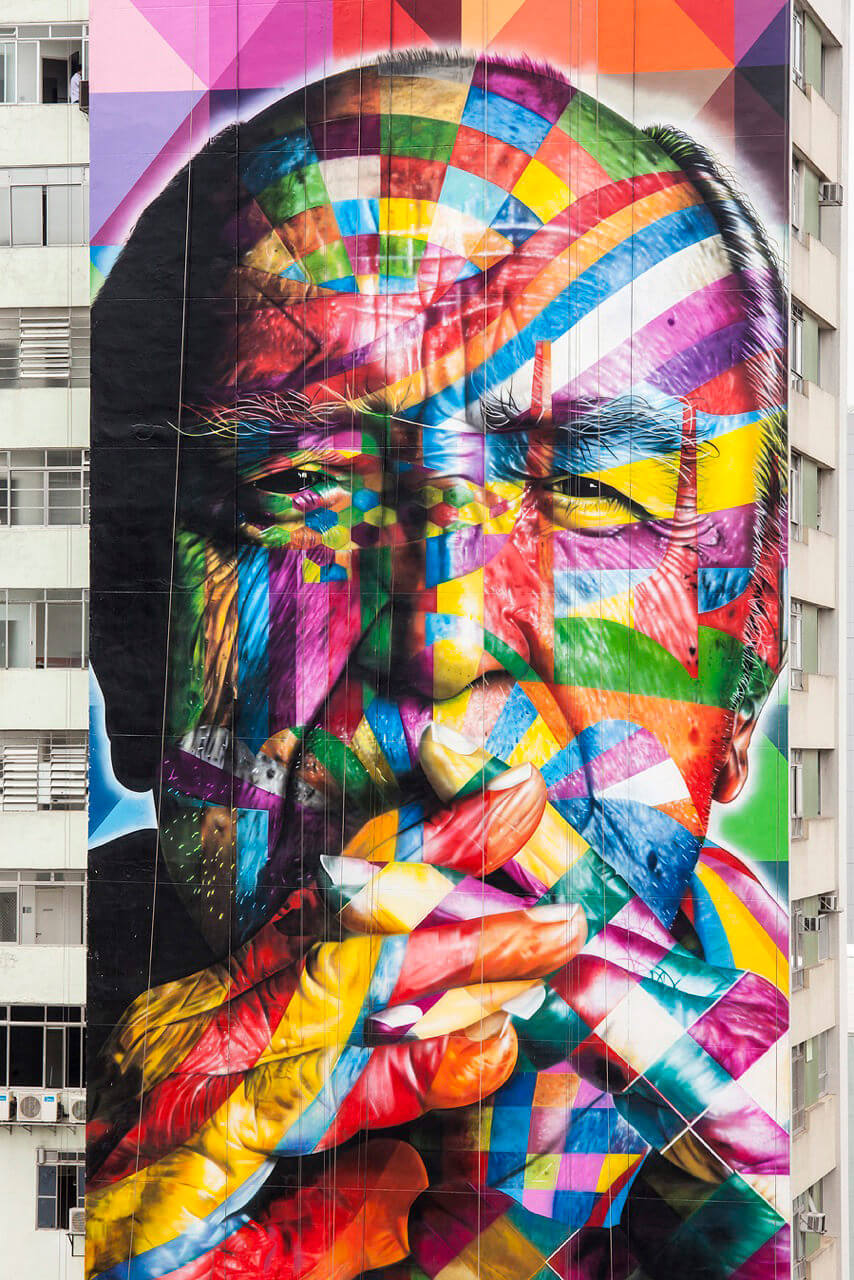
The street artist leaves his record and perpetuates before a flustered today. To the viewer, what was once a simple wall, Now is the picture of an old time (Fig. 1) and it is possible that dialogue with this time. People look astonished to the image of the scenario that the present offers them. Oscar Niemeyer (Fig. 2), with open eyes, contemplates reflexive, with an enigmatic smile, the metropolis that sees, before their eyes. Maybe to him, the city is not as beautiful as he like. One can contemplate a fantastic animal (Fig. 3) emerging from an inert wall and seems to fly in the midst of rushing cars, next to a lighthouse, in the Consolation street corner in São Paulo.
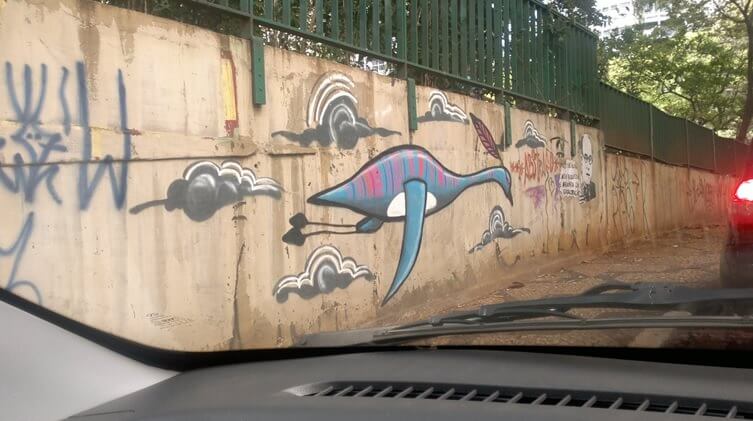
The term Urban Art or Street Art refers to artistic events that take place in public spaces. The graphite, as one of the first forms of Urban art, arose between 1960 and 1970, in the streets of Philadelphia. This new model of Art, “illegal”, had field in New York, especially in public transport and in the subway. The graffiti artists at the beginning, tackled by police, as vandals, used the cans of spray paint to create colorful and elaborate letters and very large (Fig. 4), that were the trademark of their own names. Eventually, the letters became more complex, with new formats and mingled with beautiful colored drawings (Fig. 5), many social initiatives. The works, inspired at Pop Art by Roy Lichenstein 1 (1923-1997) and in popular culture, eventually conquer space. Some graffiti artists, like Keith Haring 2 (1958-1990) and Michel Basquiat 3 (1960-1988), came out of hiding and became known in the world of Contemporary Art. In New York, Haring was arrested for his famous mural “Crack is a drug” (Crack is Wack), in which the artist showed his disgust by the lack of government action, on the increase of drug use in the city. His wall came to be deleted, but due to the aftermath of the fact, Haring was allowed to redo it.
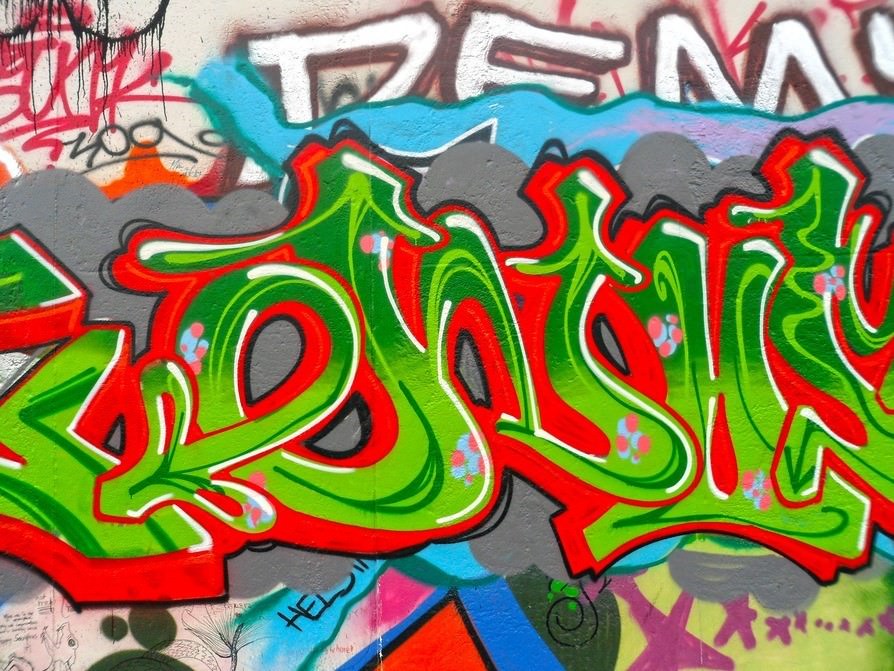
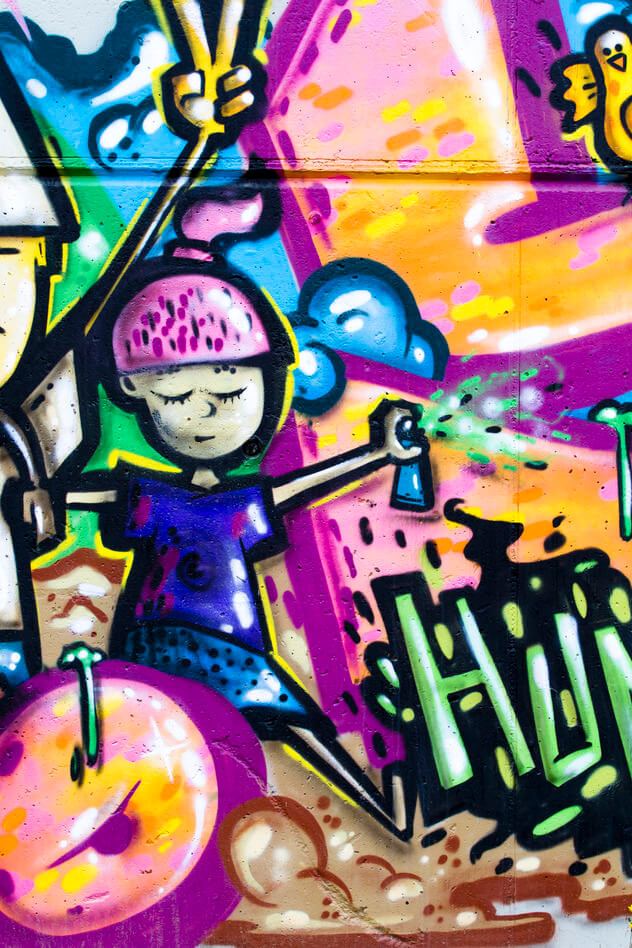
In the late 90, graffiti took new formats, acquiring a character figurative, with the use of adhesives, stencils and posters, which would facilitate the production and enable faster uptake, by the public. In this graphite phase, showed up, among others, Banksy 4 (Fig. 6) and Barry McGee (1966-). In Brazil, it is especially Eduardo Kobra, as reference in this Art. Born in São Paulo, the artist began to become known 1987 and currently has murals known in his native town, and the world 5. Are among its themes, personalities like Oscar Niemeyer, Nelson Mandela, Mother Teresa of Calcutta, Abraham Lincoln and John Lennon. The artist also address issues such as the environment, in his project Greenpincel, whose powerful images, leave evidence in its condemnation of acts against nature, in all its forms. The hallmark of his art is the use of vibrant colors, merged to geometric shapes, amid celebrity figures and urban scenes. His murals, scattered cities in Brazil and the world, are unmistakable and, more than provide the pleasurable feelings by vein Beauty, his Art questions in a smart way and induces depth thoughts.
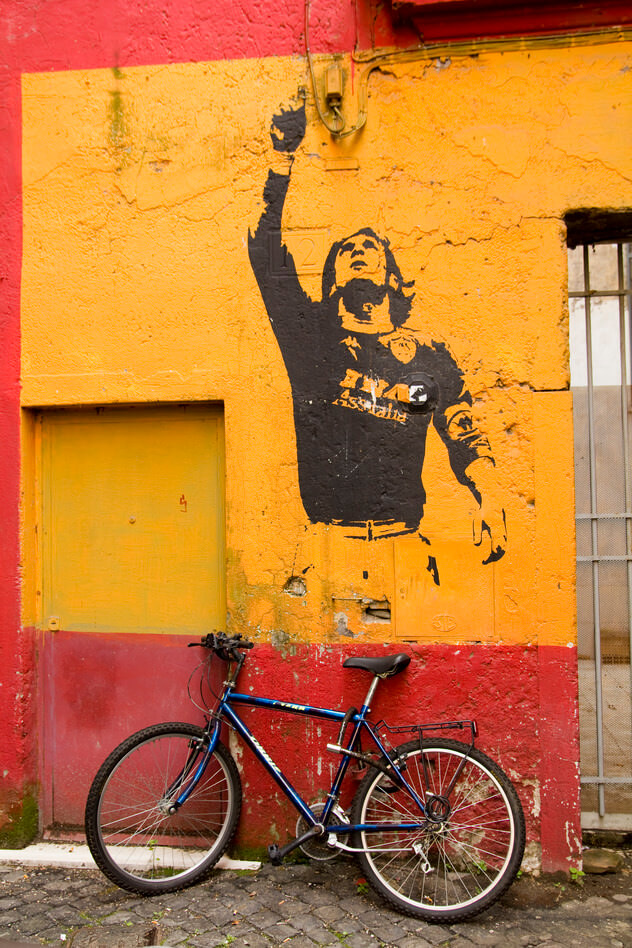
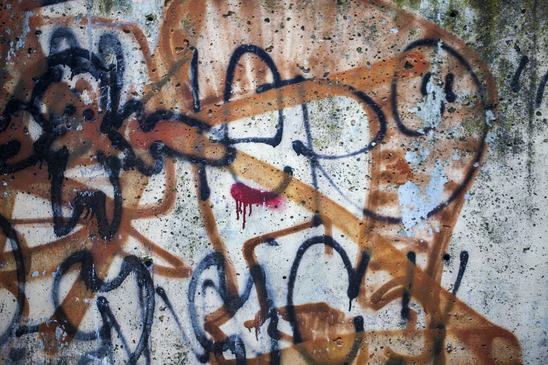
It is worth remembering that the graphite, as Art, is justified, works with the intellect, is beautiful and softens the harshness of urban life, unlike graffiti (Fig. 7), which has no connection with Art, and are totally reprehensible, by dirty the city and damaging public and private assets.
The graphite enabled the popular artists, of unquestionable talent stand out from the contemporary avant-garde and the art world. And, more than that, the style took his own Art to the street, through a Beauty with intellectual sense, about current issues and often, strong, arousing criticism and provoking discussions.
1 Roy Lichenstein
www.lichtensteinfoundation.org
2 Keith Haring
www.haring.com
3 Michel Basquiat
www.basquiat.com
4 Banksy
www.banksy.co.uk
5 Kobra – Globo video in Nova York
g1.globo.com/jornal-hoje/noticia/2014/10/eduardo-kobra-cria-obra-de-arte-de-rua-em-muros-de-bairro-em-nova-york.html
Our Thanks to Artist Eduardo Kobra
Website | Walls of Memory | Panels Green Brush
Video about Kobra:
…
Sign up to receive Event News
and the Universe of Arts first!
Liked? [highlight]Leave a comment[/highlight]!
References:
- BAUDELAIRE, Charles. Sobre a Modernidade, 6st. ed., São Paulo, Editora Paz e Terra, 2007.
- BAYER, Raymond. História da Estética. Lisboa: Editorial Estampa, 1993. Tradução de José Saramago.
- FARTHING, Stephen. Tudo Sobre a Arte. Rio de Janeiro: Sextante, 2011.
- GOMBRICH, E.H. A História da Arte. Rio de Janeiro: Editora Guanabara, 1988.
- HAUSER, Arnold. História Social da Arte e da Literatura. Martins Fontes, São Paulo, 2003.
- KANT, Immanuel. O Belo e o Sublime. Pôrto: Livraria Educação Nacional Ltda., 1942.
- SCHILLER, Friedrich Von. A Educação Estética do homem. 4to. edição. S.Paulo: Ed. Iluminuras, 2002.
The figures:
Fig. 1 – Walls of Memory. Eduardo Kobra.
Fig. 2 – Wall of Eduardo Kobra on Paulista Avenue, from 2013, Architect Oscar Niemeyer portrait. At work you can see references to various works of Niemeyer, as Planalto Palace, Pampulha and the Oscar Niemeyer Museum. Photo of Alan Teixeira.
Fig. 3 – Viaduct wall in the Consolation street corner in São Paulo, photo taken in 2013, graffiti in the midst of Art. Photo of Rosângela Vig.
Fig. 4 – Urban Art in Wall. Very colorful and elaborate letters too large. Photos of acidminde.
Fig. 5 – Urban Art in Wall. Beautiful colored drawings. Photo of Fernando Cortés.
Fig. 6 – Bansky, British street artist with works in Bristol, London and cities around the world. Photos of Toniflap.
Fig. 7 – Graffiti. Photos of okanakdeniz.
You might also like:
- First Traces of Modern Art – Abstract Expressionism in Brazil by Rosângela Vig
- First Traces of Modern Art – Expressionism in Brazil by Rosângela Vig
- Modern Art – Abstract Expressionism by Rosângela Vig
- First Traces of Modern Art – Impressionism in Brazil by Rosângela Vig
- Modern Art – Surrealism by Rosângela Vig
- Modern Art – Abstractionism by Rosângela Vig
- Modern Art – Cubism by Rosângela Vig
- Modern Art – Expressionism by Rosângela Vig
- First Traces of Modern Art – Symbolism by Rosângela Vig
- First Traces of Modern Art – Post-Impressionism by Rosângela Vig
- First Traces of Modern Art – Impressionism by Rosângela Vig
- Romanticism in Brazil by Rosângela Vig
- Romanticism by Rosângela Vig
- The Neoclassical Art in Brazil by Rosângela Vig
- The Rococo in Brazil by Rosângela Vig
- The Neoclassical Art by Rosângela Vig
- Rococo by Rosângela Vig
- How appears the Surreal Work by Rosângela Vig
- The Baroque in Brazil by Rosângela Vig
- Baroque by Rosângela Vig
- Mannerism by Rosângela Vig
- Flemish Art – Renaissance in Northern Europe by Rosângela Vig
- Renaissance by Rosângela Vig
- The Naive Art – Ingénue Art by Rosângela Vig
- Middle Ages, Byzantine Art by Rosângela Vig
- Middle Ages, Romanesque Art and Gothic Art by Rosângela Vig
- The Roman Art by Rosângela Vig
- Greek Art, Art History in Ancient Greece by Rosângela Vig
- The Egyptian Art by Rosângela Vig
- The Prehistoric Art by Rosângela Vig
- The beauty Art and the sublime Art by Rosângela Vig
- The Game of Art by Rosângela Vig
- The Misunderstood Art by Rosângela Vig
ROSÂNGELA VIG
Sorocaba – São Paulo
Facebook Profile | Facebook Fan Page | Website
Columnist at Website Obras de Arte
E-mail: rosangelavig@hotmail.com

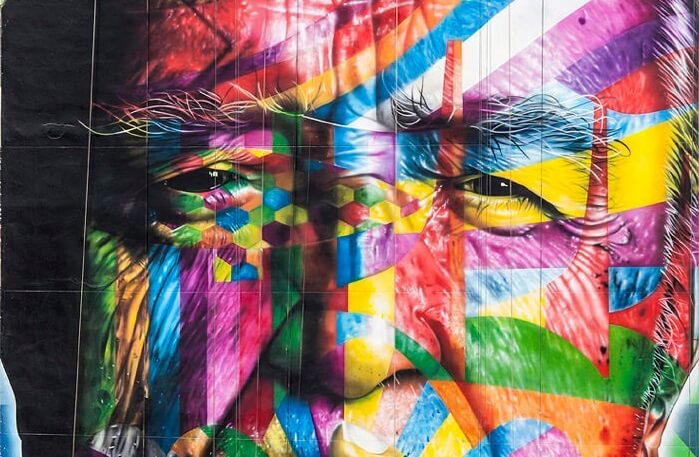
The Contemporary, A little about the Urban Art by Rosângela Vig | Website Obras de Arte
http://t.co/omSMKpd8Qk
The Contemporary, A little about the Urban Art by Rosângela Vig | Website Obras de Arte http://t.co/BLV8KAT1Y4
ART AND ART
Flavia Almeida
Curator of Art
115, Art Office
Contact: (91) 98351.1793
Address:
Street… http://t.co/dxuzLLe4nH
The Contemporary, A little about the Urban Art by Rosângela Vig http://t.co/krfn7I8vWr
I want to share my article on Urban art – Graphite… http://t.co/FOhHrlmB3P
Contemporaneity, A little about the Urban Art by Rosângela Vig http://t.co/krfn7I8vWr
Urban Art – charcoal
http://t.co/krfn7Iq6NZ http://t.co/f15mo2957S
Urban Art – charcoal, Site Works of Art… http://t.co/HyjhvHnuJT
Urban Art no site Artworks… http://t.co/gyEDYSrbBS
The Contemporary, A little about the Urban Art by Rosângela Vig http://t.co/krfn7Iq6NZ
I LOVED IT
Thank you Marta, keep an eye, There's always news!!